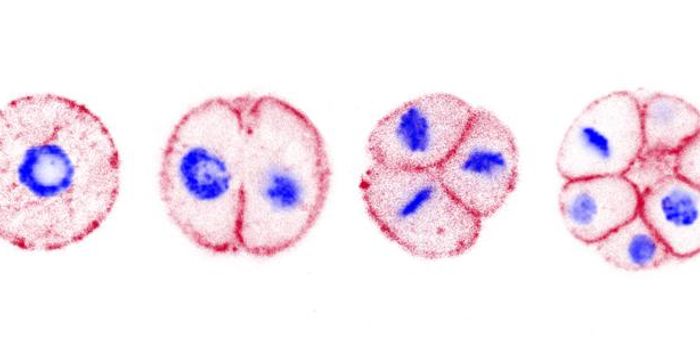Watching Neurons Form the First Circuits in a Developing Embryo
As an organism develops, it has to form the right types of cells, like heart or muscle or nerve cells, and then move them into the correct places. Developmental biologists have been studying this process for many years, and while we know many things, there’s still a lot to learn. "There are lots of things we're guessing are happening that we don't actually see," noted Yinan Wan, a researcher at the Howard Hughes Medical Institute's Janelia Research Campus.
Zebrafish can provide insight into this process. They’ve been used in biomedical research for some time, partly because they develop quickly, and also because they are transparent at a young age. Scientists can follow the movements of cells, including neurons, as they grow and migrate in the developing embryo. Wan and colleagues have tracked all the neurons in developing zebrafish as they link up with other cells to form essential circuits that control activity in the animal. Reporting in Cell and described in the video, they have now learned more about how the first neural circuits work.
Wan and others worked with Philipp Keller, a group leader at Janelia, to create the techniques they used in this analysis. "I view these tools as a platform for understanding neural development," said Wan.
"You need technology that allows you to follow, at the single-cell level, the development of an entire embryo," Keller said. Different microscopy techniques have different strengths and weaknesses, and the team had to make a microscope that could fill all of their technical needs while being gentle enough to use on a live organism - it had to be perfect, Keller said.
The researchers already made a light-sheet microscope to view cells as they divided, moved into place, and generated organs in mouse embryos. In this work, they zeroed in on neurons by first engineering a zebrafish with cells and several proteins that were tagged with fluorescent markers. They could then differentiate between various types of neurons and see their activity.
Zebrafish were imaged as they grew for fourteen hours, and high-resolution microscopy captured the action. The researchers used computational tools to analyze the patterns of activity as the neurons assumed their roles and early zebrafish behaviors began.
"A lot of computational neuroscience right now revolves around how to understand patterns of activity in populations of neurons," said study co-author Shaul Druckmann, now of Stanford University. "Developmental studies like these add a whole new dimension: making sense not just of the current population dynamics, but how these patterns develop and change over time."
While we know the zebrafish spinal cord holds a motor circuit, and it has been studied at length, "there's just a big knowledge gap," Wan said. It contains motor neurons, which interface with muscles, and interneurons that integrate signals from other places. In this study, the researchers were surprised to learn that motor neurons start sending signals first. It had been thought that they would take cues from other neurons.
"We have reconstructed the development of individual organs and even entire embryos in the past," Keller said, "but we have never before combined this with system-wide, high-speed functional imaging of the same cells."
Sources: AAAS/Eurekalert! via Howard Hughes Medical Institute, Cell








